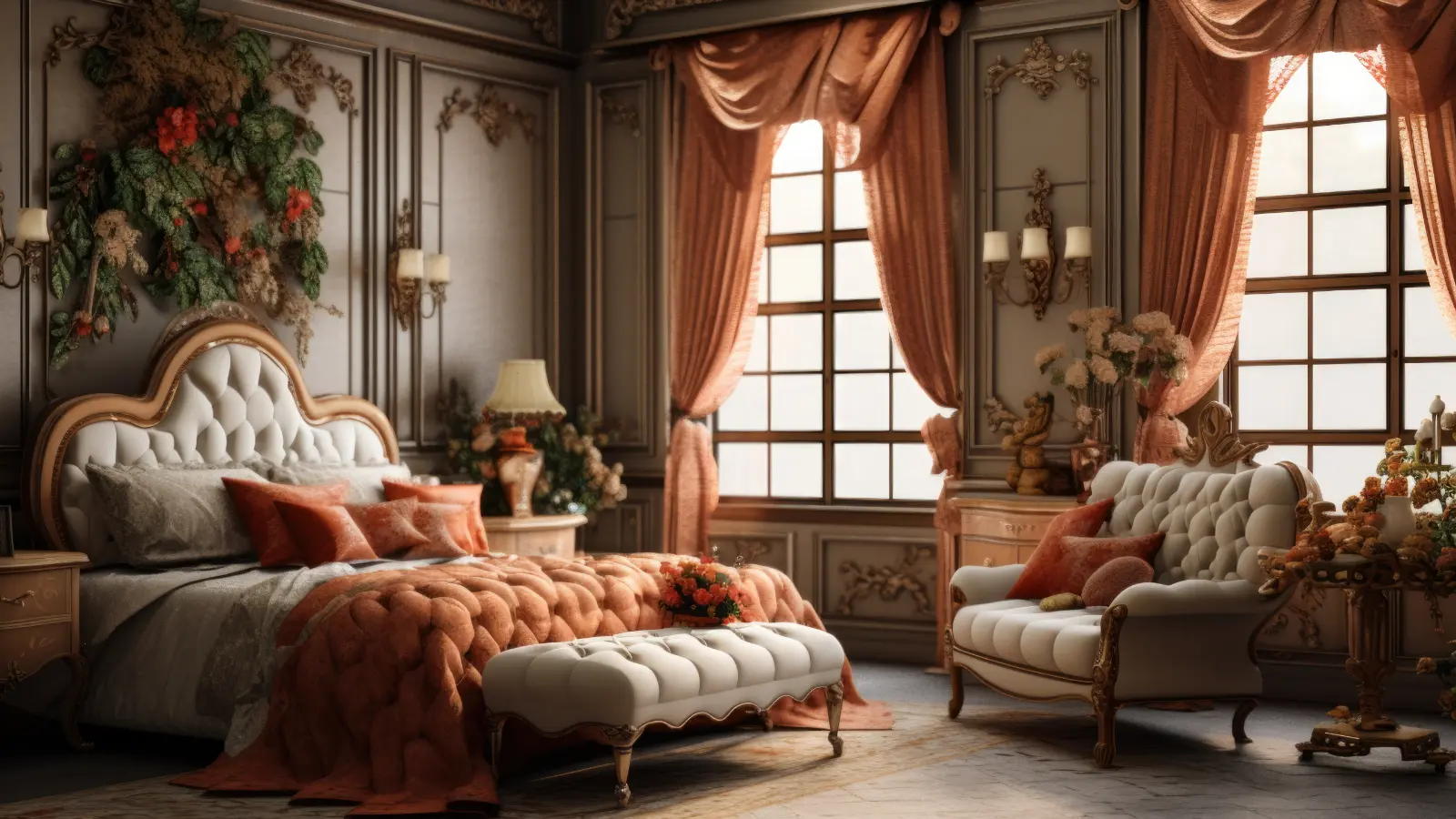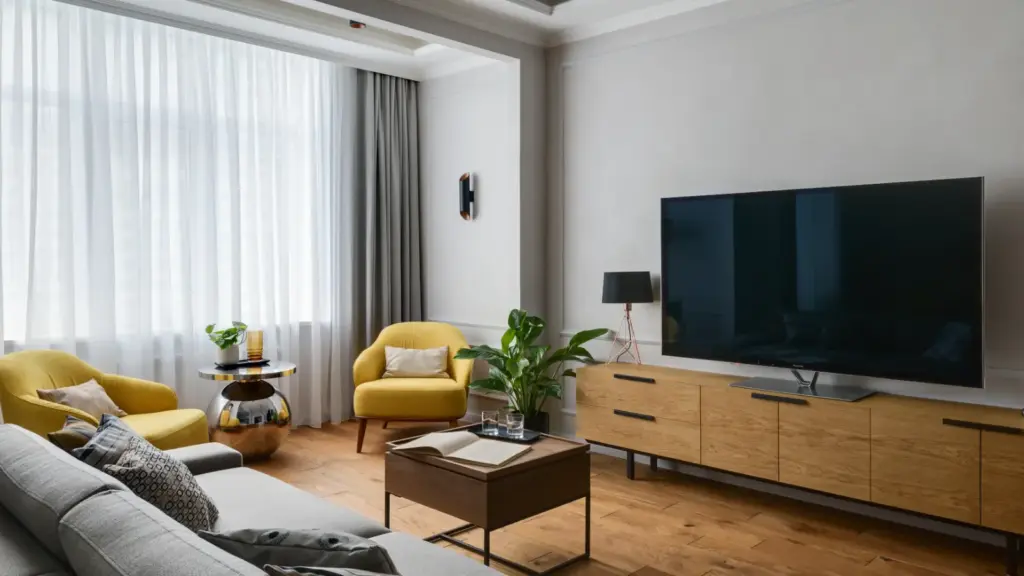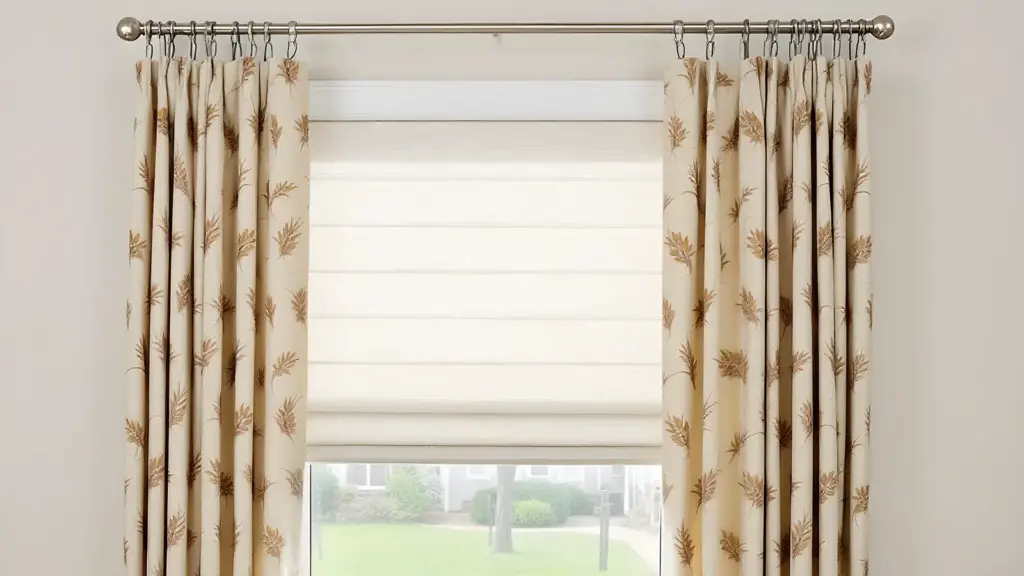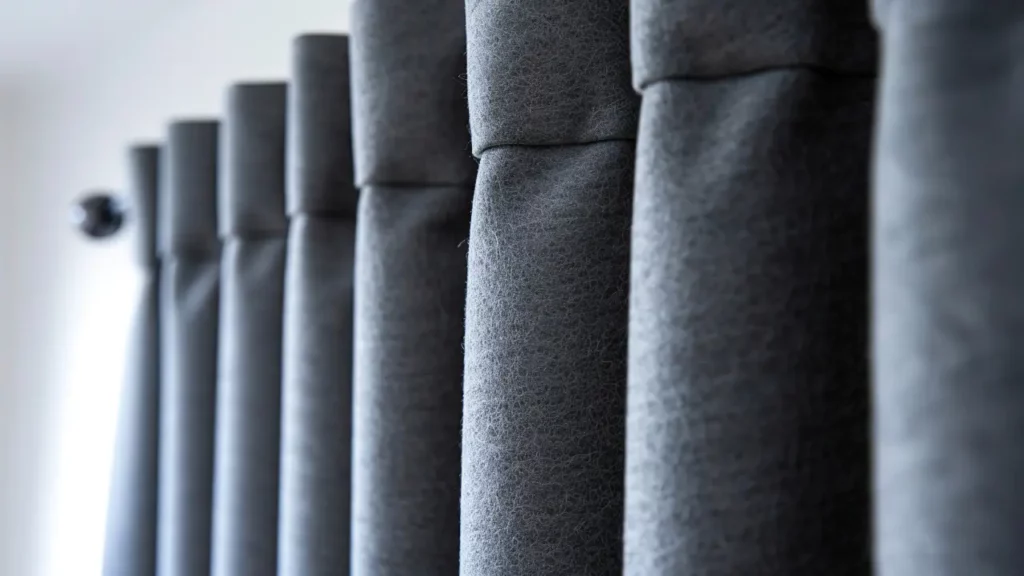The History of Window Treatments: A Peek into the Past

Window covers have always been a thing. At least, it may seem that way to anyone born in the last century.
But the earliest humans found caves for shelter and protection; caves aren’t well-suited for vertical blinds.
So, where did the idea of window treatments come from? Who came up with the concept and why?
Ancient Beginnings
Window coverings date back to ancient civilizations and early recorded history. In Egypt, for example, people used reed mats to protect their homes from the scorching sun. These mats also offered a degree of privacy. Similarly, the ancient Chinese used bamboo blinds to control sunlight entering their homes.
The ancient Egyptians also developed more elaborate window coverings from linen and other textiles. They often adorned these coverings with decorative motifs and patterns, showcasing their artistic sensibilities.
In ancient Greece, wooden shutters shielded homes against the elements. The Romans, known for their engineering and architectural prowess, used glass windows with shutters or fabric coverings (early Roman shades) to control light and temperature.
Today, we have an abundance of window treatments that draw inspiration from these ancient beginnings.
Medieval Europe
During the Middle Ages, window treatments took on a more practical role. Castles and forts were built to withstand sieges; windows were small and designed for defense rather than aesthetics.
Heavy drapes made of wool or linen served as insulation against cold winds. These drapes often had intricate tapestries depicting scenes from religious texts or aristocratic life — the more intricate and colorful the tapestry, the higher the status of the lord.
In the homes of the less affluent, solid wood shutters were hinged so they could be opened during the day for light and air and closed at night for safety and warmth. These practical shutters later evolved into the more decorative and complex wooden interior shutters we see today.
Renaissance Artistry
A renewed interest in art and design came with the Renaissance, leading to more elaborate window treatments. Curtains were no longer just functional — they had become an essential part of interior design.
The artists of the Renaissance turned their attention to textiles, creating sumptuous and intricate window treatments. Rich fabrics, such as velvet and silk, were adorned with intricate embroidery, lacework, and fringing. Gold, silver, and other metallic threads added opulence to these treatments. Some homes boasted curtains embellished with precious gems.
Drapes were often tied back with tasseled ropes, revealing beautifully dressed windows underneath. Some drapes were designed to puddle on the floor, creating an air of extravagance and luxury.
The Renaissance era transformed window treatments from mostly utilitarian elements into works of art, adding a fresh chapter to the story of window coverings. This shift towards aesthetic appeal continues to influence window treatment designs today.
Industrial Revolution: A New Era of Window Treatments
The Industrial Revolution marked a significant turning point for window treatments. Advancements in manufacturing processes meant that window treatments could be produced on a larger scale and at a lower cost. This brought about a distinct shift in the accessibility of window treatments, transforming them from a luxury item reserved for the rich into an everyday essential within reach of the average person.
The invention of the power loom accelerated the production of fabrics and textiles, making curtains and drapes more widely available. The introduction of roller blinds (now called shades), patented by Gowin Knight in England in 1769, was another significant advancement. They were made of translucent fabric or paper and could be easily raised or lowered, providing a practical and affordable option for controlling light and privacy.
Metallic Venetian blinds were introduced in America in the late 19th century. With their adjustable slats, these blinds offered a sleek, modern alternative to traditional fabric drapes and shades.
Victorian Elegance
The 19th-century Victorian era was famous for its opulence and complex design. Window treatments reflected the dominant taste for lavishness in every element of home decor.
The Victorians preferred heavy, weighty window treatments made from lush fabrics like velvet and damask.
Lace curtains, a quintessential Victorian accouterment, balanced privacy, natural light, and elegance.
The Victorian period also saw the rise of the iconic bay window. These large, angled windows demanded equally grand treatments in rich fabrics, such as brocade or chintz, to showcase their impressive size and structure.
Victorian homes featured many layers of window coverings — from heavy drapes, valances, and cornices to lace curtains, shades, and blinds — all carefully coordinated for a harmonious look.
Modern Innovations
The 20th century brought about significant advancements in window treatment technology. Electric motors enabled push button control. This led to the development of motorized blinds, shades, and curtains.
With the rise of minimalistic design in the mid-20th century, simpler and more streamlined window treatments gained popularity. Simple drapes or blinds in monochromatic colors offered a clean, modern look.
Today, we can access endless window treatment options that blend function and fashion. From traditional curtains and drapes to roller shades, there’s a perfect window treatment solution for every style and need.
The Future of Window Treatments
As technology advances, we can expect even more breakthroughs in window treatments. Smart home integration lets us control our window coverings via voice commands or a smartphone app.
Contemporary trends also focus on sustainability and environmental conservation. Bamboo shades have gained popularity for their eco-friendly attributes. These shades, made from fast-growing and sustainable bamboo, look chic and natural but with a reduced environmental footprint.
Solar-powered blinds are an exciting innovation on the horizon. These technologically advanced window treatments harness the power of the sun to adjust their position, maximizing natural light and heat during the day and providing insulation when it’s cooler. They reduce reliance on artificial lighting and climate control and highlight the potential for window treatments to conserve energy.
The future of window treatments is bright, with endless possibilities for designs and features that serve function and fashion. Whether you’re looking to add a decorative accent or enhance the functionality of your home, there’s a perfect window treatment waiting for you.
About Aero Shade
Aero Shade is one of the most trusted dealers of window treatments in Los Angeles and one of the oldest. We’ve been around since 1947; motorized shades were a rarity then. We’re a part of LA’s window treatment history and have grown to the point where we’re now the first option for many local celebrities.
We work directly with prominent architects, interior designers, and contractors to build custom window treatments for one-of-a-kind homes. But we also work with homeowners throughout metro Los Angeles to create the perfect window treatments that were once out of reach for the average person.
Please call us for a free estimate, or visit our showroom to see and test working models of our products. We’re open weekdays from 8:30 to 5:00. 323-655-2411.
FAQs: More about the History of Window Treatments
Q: What were the earliest forms of window treatments?
The earliest window treatments included animal skins, woven mats, and wooden shutters. These materials blocked out light, wind, and rain.
Q: How did window treatments evolve?
As civilizations developed, window treatments became more sophisticated and decorative. Ancient Egyptians used translucent fabrics to filter light and provide privacy. In ancient Rome, glass windows were introduced, and window treatments became more elaborate, using drapes, curtains, and valances.
Q: What were some of the most popular window treatments in the Middle Ages?
In the Middle Ages, window treatments were often made from rich fabrics like velvet, brocade, and damask. Where wealth and rank allowed, these fabrics were embroidered or adorned with ornate patterns and lavish fringes. It was also common to layer window treatments for additional warmth and privacy.
Q: How did window treatments change during the Renaissance?
During the Renaissance, window treatments became lighter and more airy. Sheer fabrics such as silk and linen created a sense of openness and elegance.
Q: What were some of the most popular window treatments in the Victorian era?
Victorian window treatments created a sense of drama and romance. Heavy drapes, curtains, and valances were often used, adorned with tassels, fringe, and other embellishments.
Q: How did window treatments change during the Art Deco era?
During the Art Deco era, window treatments became more streamlined and geometric. Simple fabrics like cotton and linen were accented with bold colors and geometric shapes.
Q: What were some of the most popular window treatments in the mid-century modern era?
Mid-century window treatments were simple and functional. Roller shades and Venetian blinds were popular choices, often made from natural materials like wood and bamboo.
Q: How have window treatments changed in recent years?
Window treatments have become more energy-efficient. Cellular and blackout shades are popular choices that can help keep homes warm in the winter and cool in the summer.
Q: What are some of the latest trends in window treatments?
Some trends include smart shades, motorized blinds, eco-friendly bamboo materials, and solar-powered options. There’s also a trend towards more minimalist designs, with sleek and simple window treatments in monochromatic colors.
Related Links
Related Posts


